Gardening can be a pleasurable activity or it can be something very tedious and time consuming. However you look at it, tending a flourishing garden is a skill that does not come naturally to all of us. You might want to create a veggie garden or prefer to have your garden to be full of flowers during spring and summer.
To make this happen, you need to understand many things about gardening. Right from best garden design for your space, to understanding the different gardening tools, seeds, and various garden supplies that will increase your chances of building a blooming garden.
No matter how much your read about gardening, you need to get your hands dirty and fail a few times before getting it right. You will fail to mix the right kind of soil, your seeds won’t sprout, or the little sprouts will die because of low sunlight or because watered it a lot.
I am not trying to discourage you. As tough as it is, gardening is easily one of the most rewarding hobbies that you can have. So check out this collection of gardening books that can get you started and keep you informed every step of the way.
Garden Design
Yep, everything must start on the drawing board. If you are a serious gardener, you will surely have a vision of how you want your garden to be. Depending on whether you want a flowers-only garden or a mix of vegetable garden and flowers, the layout of your garden will change. There a hundred different consideration that you have to think about before you plant that first seed or go for shopping.
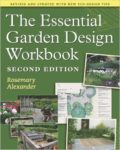 The Essential Garden Design Workbook
The Essential Garden Design Workbook
Author:Rosemary Alexander
Paperback: 304 pages
Publisher: Timber Press; 2 Rev Upd edition (May 20, 2009)
ISBN: 0881929751, 978-0881929751
The book assumes a reader who is familiar with gardening. So if you have been a gardening enthusiast and have been dabbling in planting, you will be OK with this book. Although, some of the suggestions are specific to England, the gardening principles do not change much.
The book helps you draw your garden plans and bring your dream garden to reality. The author suggests that you draw a grid for the available place and then take it from there to plan what you would like to plant at which location.
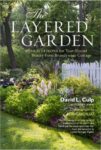 The Layered Garden: Design Lessons for Year-Round Beauty from Brandywine Cottage
The Layered Garden: Design Lessons for Year-Round Beauty from Brandywine Cottage
Author: David L. Culp, Adam Levine
Hardcover: 312 pages
Publisher: Timber Press (October 16, 2012)
ISBN: 1604692367, 978-1604692365
Another book that you can refer to is the The Layered Garden by David Culp. David Culp has created a garden in Pennsylvania on a 2-acre lot that is blooming round the year. In this book, he shows readers how to design and plan a layered garden. He educated the reader on selecting different types of bushes and plants based on how they grow and bloom throughout the year. With amazing photos and an easy narrative, this is a book for an advanced gardener.
Soil Management
Soil is the fuel that your plants need to grow and prosper. A good gardener understands this and takes care of soil as much as she takes care of the the crop above. There are a lot of factors that you need to get right for the plant to flourish. The right quantity of nutrients, the right amount of moisture, and absence of pests.
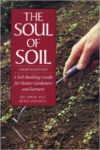 The Soul of Soil: A Soil-Building Guide for Master Gardeners and Farmers
The Soul of Soil: A Soil-Building Guide for Master Gardeners and Farmers
Author: Joseph Smillie, Grace Gershuny
Paperback: 173 pages
Publisher: Chelsea Green Publishing; Revised and updated fourth edition edition (1999)
ISBN: 1890132314, 978-1890132316
In The Soul of Soil, Joseph Simillie and Grace Gershuny adresses all these questions and doubts of the readers. They begin with the basics, explaining the chemical and biological composition of the soil and then inform the readers about things that they need to observe to analyze an make judgments. The second half f the book concentrates more on the best practices and soil management through composting and mixing the right kind of manures.
But if all this information is a little too much for you, this short guide by Amber Richards will get your small garden going. The author begins with simple soil testing methods for you to define a baseline and then begin working on the soil quality.
 A Gardening Guide For Organic Soil Building: Methods to Obtain Healthy Garden Soil
A Gardening Guide For Organic Soil Building: Methods to Obtain Healthy Garden Soil
Author: Amber Richards
Print Length: 47 pages
Publisher: Amber Richards (December 1, 2013)
Publication Date: December 1, 2013
ASIN: B00F141TT6
The better you know your soil type that better you will be prepared to make it right. The texture of your soil determines how frequently you need to water the garden or what kind of additions can make the soil more suited for the plants that you want in your gardens. The author explains how to make your soil alkaline or acidic and suggests simple methods to organically boost the soil nutrients.
Growing Seeds
Once you are done with your garden design and have the right kind of soil for the plants you want in your garden, the next big challenge comes from growing seeds. You can buy plants, but seeds often offer more variety and give you a chance to experiment with different things.
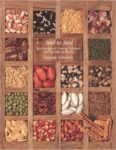 Seed to Seed: Seed Saving and Growing Techniques for Vegetable Gardeners
Seed to Seed: Seed Saving and Growing Techniques for Vegetable Gardeners
Author: by Suzanne Ashworth
Paperback: 228 pages
Publisher: Seed Savers Exchange; 2 edition (March 1, 2002)
ISBN-10: 1882424581, 978-1882424580
But growing seeds is no that easy. It takes a lot of patience and a step-by-step adjustment to make the seed sprout and then keep it healthy until it can stand on its own in the first few weeks. Moreover, you might also want to use the seeds from the veggies you buy at the market and try a little vegetable garden. Seed to Seed, Suzanne Ashworth is an extensive guide that instructs you on how to store seeds and care for them. She also talks about different types of pollination and seed treatment before planting the seeds.
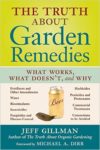 The Truth About Garden Remedies: What Works, What Doesn’t, and Why
The Truth About Garden Remedies: What Works, What Doesn’t, and Why
Author: Jeff Gillman
Paperback: 216 pages
Publisher: Timber Press; Revised edition (February 1, 2008)
ISBN: 0881929123, 978-0881929126
But your responsibility as a gardener doesn’t end with planting the seed. Your garden not only needs regular trimming, but a watchful and alert eye to spot infestations. With growing plants, you also need to refuel your soil nutrients. A combination of fertilizers in the market and some home remedies can help you keep your soil rich and free of bugs and infections. In The Truth About Garden Remedies: What Works, What Doesn’t, and Why, Jeff Gillman gives a detailed explanation of Insecticides, Fungicides, Herbicides and everything that you need to know to keep your garden free of diseases and in prime health.